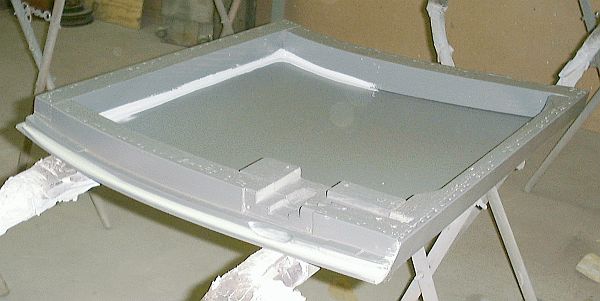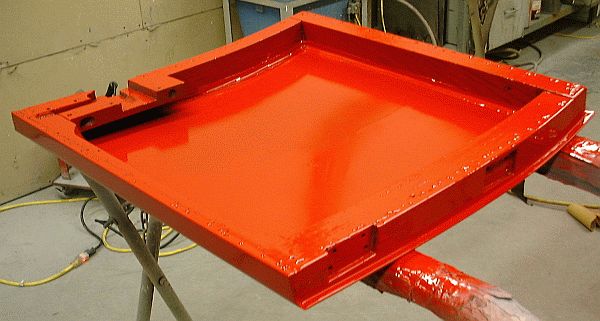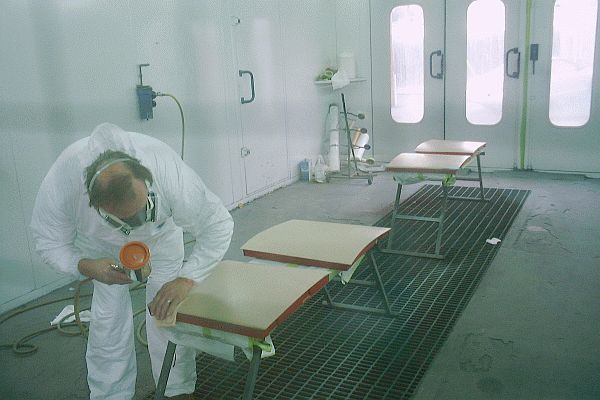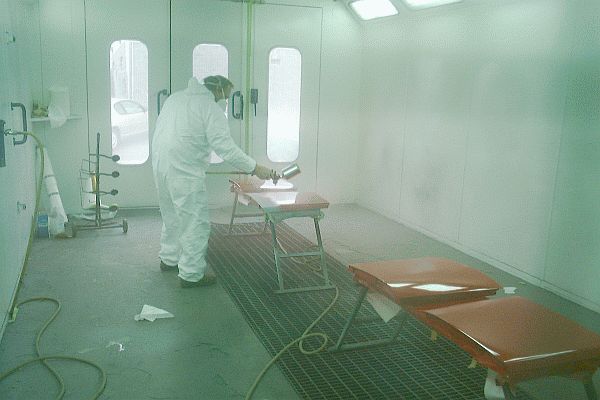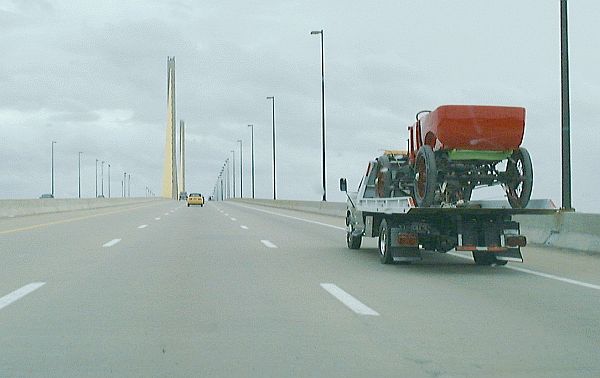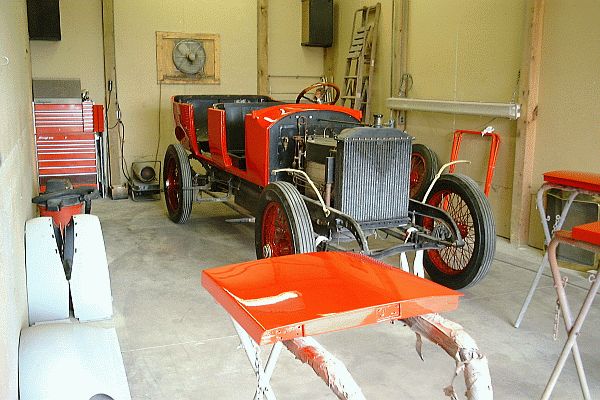|
In addition to painting the body of the car it is also important to paint any parts of the car that can be removed which sit alongside body panels, etc. By painting the body and the removable panels such as the four doors and the hood at the same time, the same paint mix and painting conditions exist to insure there's no difference in the finished project.
Before the car doors could be painted in the paint booth they had to be prepared. The Stanley doors, like the body, are wooden oak frames over which metal has been hand formed. While the body is aluminum, the four doors and hood panels are steel along with the black wheel fenders. Since the doors were showing a low level of rusting on the interior they needed to be treated. The inside metal surfaces were sanded to remove any rust and the wood sealed. Finally they were primed to prevent rusting in the future. This work was all done in a garage prior to the car being taken to the paint booth. Before the door interiors could be painted red the edges of the doors where the metal is folded and nailed to the wooden frame were coated with body caulk (light gray material in the photograph above). Additionally, in case any moisture condensed on the interior of the door a bead of body caulk at the lower inside edge where the sheet metal overlaps the wooden frame was applied. This insures any moisture that beads on the panel's inside will not run down between the wood and metal and start the metal rusting or the oak rotting.
The interior of the door panels served to be the color check before painting the body of the car. The door panels are complex geometries and real works of cabinet making. No two doors on the car are the same. The front doors are slightly smaller in length than the rear doors. Additionally the contours of the body are carried through the doors making left-side doors different than right-side doors. Thus no door is "flat" but rather a complex geometry consisting of a hand-crafted wooden oak frame over which heavy gauge sheet steel has been hand-formed and attached by small nails. The painting of the doors also insures all sides of the oak frame members are sealed and thus not absorb moisture. One of the things that was learned during the fitting of the doors and correction of the car's body having sagged over time was that the body also moved about depending on the humidity of the air. The Stanley doors do not sit flush with the surface of the body as occurs with today's cars. Instead the Stanley door edges overlap the body to hide the joint. As the ambient humidity changes the wooden frame grows and shrinks according to how much moisture is absorbed by the wood. This motion causes problems with the door alignments. In addition to the humidity affecting the body the car's frame is not rigid (by today's standards) and thus it flexes as well. The body and frame flexing as the car moves along uneven roads adds yet another complexity to attempting to align the body, doors, hood, and other components of the car.
Along with the painting of the body the car's doors are cleaned to insure they are free of any fingerprint oils or other foreign material. Then a coat of DuPont's ChromaPremier System Sealer #4940 is applied just as was done with the car's body.
Finally, just as was done with the body, three coats of paint are applied to each door. By having painted the interior and edges of the doors with the red color of the body the necessity to paint all the intricate edges and surfaces of the wooden door frame were eliminated. In the paint booth only the exterior surfaces of each door are painted.
With the car painted and now dry from the baking process, all protective paper was removed. The car was loaded onto a roll-back transporter and returned to the garage that served as the hub for body restoration. Seen in the photo above the car is traveling over the St. Georges Bridge which carries Route 1 traffic across the Chesapeake & Delaware Canal. The day the car was painted was a drizzly, cool, typical Delaware March Winter day.
Back at the garage after painting the Stanley awaits the next steps of body restoration. Up until this point, being careful around the car was generally a secondary consideration as any accidental scratch or other problem could be corrected. In fact the amount of hammering, twisting, filling, sanding and other punishments that occurred to the body up until this point is rather amazing. From March 29, 2003 forward, great care would now be exercised around the body to insure it wasn't scratched or otherwise damaged in any manner. In the photograph above the door panels sit on stands to continue their cure. To the left of the photo the four black wheel fenders (Stanley referred to them as mud guards) are seen standing along the wall in their primer coat awaiting being painted black. Of interest in the above photograph is that the car looks much like photos of cars being assembled in the Stanley factory. The cars were built up without the body. If you picture the car in the above photograph with the body removed from the firewall rearward, you have an idea of what the car looked like in the Stanley factory during assembly. Cars were assembled without their bodies and test driven with a temporary seat and firewall in place. Only when the car was mechanically correct was the body lowered in place and fastened to the frame with six carriage bolts. The leather interior would be tacked in place, the top installed, the seats installed, floorboards set in place and the car made ready for delivery. |
